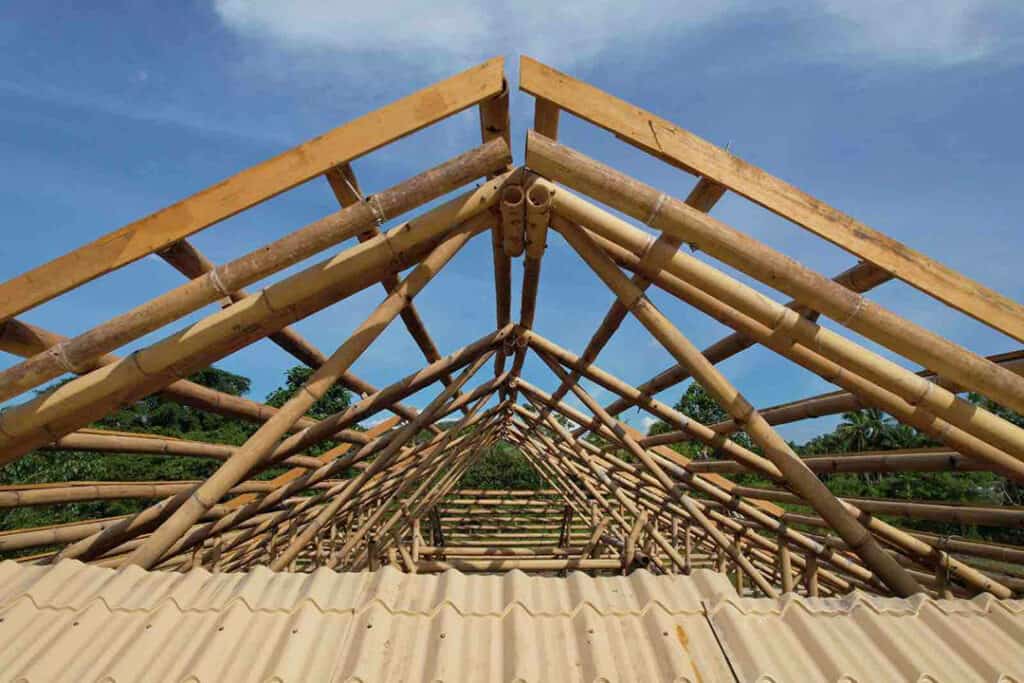
BAMBOO is expected to be included in the latest edition of the National Structural Code of the Philippines (NSCP) as an alternative building technology.
Base Bahay Foundation, Inc. has piloted local research and the use of bamboo in socialized housing due to its sustainability, resiliency to natural disasters and cost efficiency.
“The sooner we get the release of the NSCP with bamboo as part of its eight edition, the sooner we can entice all engineers and architects to start thinking of bamboo as a construction mainstream,” Pablo A. Jorillo, Jr., general manager at Base, told reporters at the Bamboost architecture and design forum in Makati City on Sept. 15.
Mr. Jorillo said this would be the first “tipping point” to push bamboo towards mass adoption in construction and regulation.
Johann Baar, director for affordable housing and technology at Hilti Foundation, said the Base Innovation Center is working on the building code for bamboo.
This is aligned with the Philippine National Standard 22157 that informs testing procedures for obtained bamboo culms, and the International Organization for Standardization 22156 that aims to institutionalize the use of bamboo in structural design.
However, Mr. Baar noted that bamboo still carries the stigma of being “the poor man’s material” which is not durable and can quickly deteriorate.
He noted bamboo research has shown that a few species have a capacity for construction.
“It’s not just social housing. It’s a strong and resilient material for any kind of building construction. We are on our way to making it a standard building material like timber,” Mr. Baar said.
Mr. Baar mentioned that some Latin American countries have used bamboo technology to build structures up to three levels that have stood up to 400 years, alongside applications in resorts and domes.
“We are seeing its potential in medium- and high-rise structures,” Mr. Baar said. “When you look at timber structures, it took us a decade or more to see it in high-rise structures. It’s just a question of a couple of years hopefully.”
SOCIALIZED HOUSING
Given bamboo’s abundance in the global south, Base first saw the opportunity to use the alternative material to address the Philippines’ housing problem.
Citing its advantages, Mr. Jorillo said that bamboo lowers the cost of housing by 30-40% compared to units built with standard concrete hollow blocks.
Base’s cement bamboo frame technology, which uses load-bearing bamboo with metal connections and mortar cement plaster, is designed to withstand typhoons of 240-280 kilometers per hour and resist earthquakes of 6.5-7.5 magnitude, he said.
Base has built over 1,500 homes nationwide, with about a third in Negros Occidental. This is part of its Impact 2025 project, where it aims to build 10,000 sustainable housing units.
Other areas serviced by Base include Batangas, Sorsogon, Tacloban, Dumaguete, Davao, Cotabato, and Bukidnon.
Mr. Jorillo said that Base is working with the Department of Human Settlements and Urban Development, local government units, non-government organizations, as well as the private sector such as Ayala Land, Inc. and Megaworld Corp., for more opportunities in bamboo construction and housing technology.
Base has also built about 400 houses in Nepal, with plans to expand in Sri Lanka and India next, he noted.
If you like this article, share it on social media by clicking any of the icons below.
Or in case you haven’t subscribed yet to our newsletter, please click SUBSCRIBE so you won’t miss the daily real estate news updates delivered right to your Inbox.
The article was originally published in Business World and written by Miguel Hanz L. Antivola.







More Stories
Vista Land Celebrates 50 Years with Sandiwa: An Event Honoring Leadership, Legacy, and the Filipino Dream of Homeownership
Vista Land Celebrates Love Month in Ilocos Region
Vista Land Bridges Cebuano Heritage and Progress with Valencia by Vista Estates